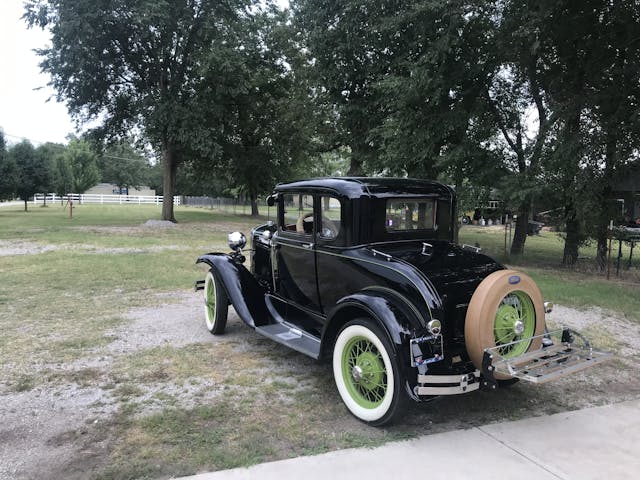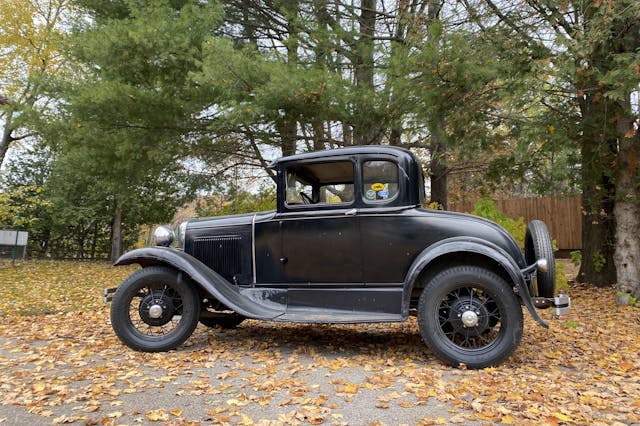The Model A Ford is the perfect entry to prewar ownership
Henry Ford was determined the Model T would be the last car Ford produced, intending that production would continue indefinitely. This worked for decades, but the low-tech T was handily eclipsed by the advancing designs from other manufacturers in the 1920s. Sales began to falter, despite Ford lowering the price each year, and between the board and Ford’s son Edsel advising him to change direction, Ford relented. The Model A would arrive as an all-new car for 1928.
Changing over production from the Model T to the Model A was not easy. In fact, retooling the factory took the better part of a year. Model T production ended in mid-1927, and not until that October did the first Model A roll off the assembly line. The differences between the two cars may be more significant than you’d expect, but the same improvements that served Ford customers in the late 1920s make the Model A a perfect entry point to prewar ownership.

Both the Model T and the Model A used four-cylinder engines, but the Model A’s 200-cubic-inch flathead inline-four made 40 hp, double the power of its predecessor. A traditional three-speed transmission replaced the T’s planetary band-type gearbox, and the chassis became more rigid.
Overall, the Model A was less of the do-anything machine that the Model T was. Henry Ford designed the T to be affordable and adaptable, meaning that many Model Ts were modified and pressed into service as farm or shop equipment rather than as personal transportation. The Model A, on the other hand, was less of a multitasking machine. It focused more on transportation—what we’d consider normal car duty—and boasted a top speed of 45 mph.

“The Model A is very popular thanks to the mechanical simplicity, fun driving experience, and ability to stand out in most car show crowds despite fitting into smaller budgets,” says Hawk Hawkins, Hagerty Price Guide support specialist. “It has really become a go-to entry level classic car—and for good reason.”
It may be an entry-level classic, but that doesn’t mean that first-time or young buyers comprise the Model A’s main buyer base. Per our data, 72 percent of quotes for Model A Fords come from members of the pre-boomer and baby boomer generations. Interest has remained largely stagnant over the last two years, which has led to a dip in the prices for even the most desirable Model As.
The chassis and powertrain remained nearly identical across all of Model A production, so the main variability—and thus, the determining factor for desirability—is body style. The town car, convertible sedan, victoria, phaeton, cabriolet, and station wagon are the most sought-after styles; they’re also the least common, either because of a low production count or a high level of attrition. Even so, prices for these configurations have dipped over the last year. Values for the more common coupe, roadster, town sedan, Fordor sedan, Tudor sedan, and business coupe have stayed level.
“Values tend to drop sharply with condition for Model As. Very nice examples are rare because they hail from an era in which items were worked and utilized until they were unusable, which meant modifications or an otherwise significant amount of wear,” says Hawkins. “Then, with the introduction of the V-8 in 1932, the Model A became all but obsolete and was treated as such for many years.”

Still, many Model As survived and are great options for those interested in prewar motoring. Even better, there’s a Model A out there to satisfy a variety of budgets. A #1 (Concours) condition town car can command $55,000, but a similar-condition business coupe or Tudor sedan can be had in the low $20,000 range. Factor in that most Model As are found in #3 (Good) condition mark, and you have a very attainable bar for a unique and fun car that can be driven and enjoyed without fear of damage. Parts support is vast, and both problems and their solutions are well-documented.
Is there a better entry point to vintage cars? Yes, the cars of the 1950s and ’60s are significantly more usable, but if your interest lies specifically in prewar motoring, the best starting point is a Ford Model A. Given the stable values, picking up a Model A is likely a safe play, especially if you are open to doing some projects on the car to improve its condition during your ownership.
Like this article? Check out Hagerty Insider, our e-magazine devoted to tracking trends in the collector car market.


